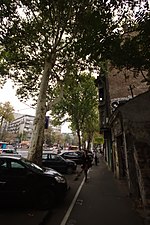The Temple of Saint Sava (Serbian Cyrillic: Храм Светог Саве, romanized: Hram Svetog Save, lit. ''The Temple of Saint Sava'') is a Serbian Orthodox church which sits on the Vračar plateau in Belgrade, Serbia. It was planned as the bishopric seat and main cathedral of the Serbian Orthodox Church. The church is dedicated to Saint Sava, the founder of the Serbian Orthodox Church and an important figure in medieval Serbia. It is built on the presumed location of St. Sava's grave. His coffin had been moved from Mileševa Monastery to Belgrade. The coffin was placed on a pyre and burnt in 1595 by Ottoman Grand Vizier Sinan Pasha. Bogdan Nestorović and Aleksandar Deroko were finally chosen to be the architects in 1932 after a second revised competition in 1926–27 (for which no first award was granted, Nestorović being runner up). This sudden decision instigated an important debate in interwar Yugoslavia which centered around the temple's size, design and symbolic national function. This was accompanied by a sizeable increase in the base area of the ambitiously conceived project. The new design departed from the competition guidelines issued in 1926, and was to replicate the dimensions and architecture of Hagia Sophia.The first stone was laid in 1935. When Yugoslavia was under occupation in 1941, the construction was approximately ten metres high. The incomplete building was used as a depot by the German army and Tito's partisans. After the war, the Orthodox Church was unsuccessful in its attempt to secure permission to complete the building. Permission was granted in 1984, and the architect Branko Pešić was commissioned to adapt the project to new construction techniques. On May 12, 1985, a liturgy was held at the temple with 100,000 people in attendance. This marked a turning point in the then-communist country; the church had reinstated its position and the communist elite had to back down from a decade-long ban prohibiting the construction of the church. In June 1989, the concrete dome of the temple, weighing 4,000 tonnes and constructed entirely on the ground, was raised to its present position. This was a landmark achievement in construction.It is the largest Orthodox church in Serbia, one of the largest Eastern Orthodox churches and it ranks among the largest churches in the world. It is the most recognisable building in Belgrade and a landmark, as its dominating dome resembles that of the Hagia Sophia, after which it had been modelled. The church contains a rigorous symmetrical layout with a great sensitivity to light due to its large dome and four apses. Its interior cladding with 12,000 m2 (130,000 sq ft) of gold mosaics is almost complete. The initiative for the mosaic decoration inside the dome was secured by a donation of the Russian Federation, while the larger remainder of the mosaic cladding was successively financed by the Republic of Serbia.
Vladimir Putin of Russia visited the church in January 2019 and announced that the Russian state would finance parts of the remaining works in the mosaic cladding. He symbolically laid a stone in a mosaic with the presentation of the Mandylion. Putin was formally invited to attend the consecration of the church, which was then scheduled for the end of 2020 but the ceremony has not yet occurred owing to the COVID-19 pandemic.
Following the conversion of the Hagia Sophia to a mosque in July 2020, the Patriarch of Serbia Irinej and Serbia's president Aleksandar Vučić in August 2020 expressed their wish the Saint Sava Church would symbolically replace the Hagia Sophia, after which it was modelled, and become a ″New Hagia Sophia″.In May 2021, the entire Vračar plateau which surrounds the church was declared a spatial cultural-historical unit, and placed under the state protection as the Saint Sava's Plateau. The rationale in government's decision included "symbolical, memorial, cultural-historical, architectural-urban and artistic values of the locality, which represents memory spot of two turning points in Serbian history: Burning of Saint Sava's relics and the First Serbian Uprising".









